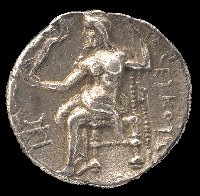Coinage Technique of The Ancient Greek

Greek coins were usually struck rather than cast. Dies made of specially hardened bronze or iron were prepared by engraving the types or designs into a fixed anvil and a portable punch. Struck by a hammer, the punch compressed the softened metal blank set between the two countersunk dies to create a two-headed coin in high raised relief. The anvil side of the coin face is called the obverse; the punch side the reverse. On rare occasions the coin engravers, or die-cutters as they are sometimes known, were allowed to sign their works.
The Ancient Greek world

0 Comments:
Post a Comment
<< Home